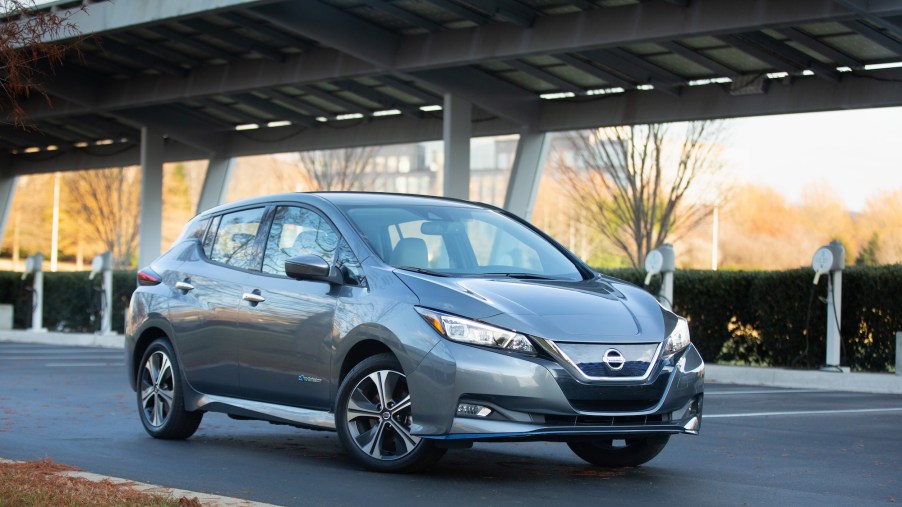
The 2021 Nissan Leaf Is a Low-Budget, High-Safety Option
Compact cars tend to lack the exciting powertrains and plush interiors of larger, more expensive rivals. But smaller cars often offer long lists of standard features and commuter-friendly fuel efficiency. The Nissan Leaf is competitively priced for an EV and comes with numerous standard driver’s aids.
Because of this, it placed high on U.S. News’ list “Safest Small Cars of 2021.” So, how does the Nissan Leaf protect itself and its occupants from injury?
The 2021 Nissan Leaf’s safety features
All Nissan Leaf models boast lane-keeping assistance, automatic emergency braking, blind-spot monitoring, pedestrian detection, rear parking sensors, and automatic high-beams. Forward-collision warning with rear cross-traffic alert is also included, as is a rear-seat reminder. Higher trims offer a surround-view camera system, adaptive cruise control, foglights, and driver attention monitoring.
U.S. News also highlights the available ProPilot Assist, a semiautonomous driving program that steers and brakes independently. Regardless of features, the 2021 Nissan Leaf earned good crash test scores from the National Highway Traffic Safety Administration (NHTSA) and the Insurance Institute for Highway Safety (IIHS). However, it has yet to be tested in several categories, including front crash prevention and small overlap tests.
The Nissan Leaf’s other standard features
The Nissan Leaf S packs an electric motor and 40-kWh battery, producing a combined 147 hp. This hybrid powertrain provides plenty of energy around town but might struggle on the highway. The standard battery also gets the best gas mileage: 111 MPGe combined city/highway.
It has more than enough range for a few city commutes, with 149 miles on a full charge. You can charge it with the optional onboard system or by using a DC fast-charging station. With the latter, the battery is restored by 80 percent in only 40 minutes. With a home charger, the battery reaches full capacity in about eight hours.
The Nissan Leaf also offers a decent array of convenience technology. Though not aesthetically pleasing, the infotainment interface is highly user-friendly, Car and Driver reports. Standard features include smartphone integration, voice recognition, and satellite radio.
What’s included in higher trims?
The Nissan Leaf SV comes with a standard quick-charge port, cruise control, and fog lights. The interior is spruced up with heated seats, a leather-wrapped heated steering wheel, and navigation. Opting for the S Plus gives you a bigger 62-kWh battery.
This lets the Nissan Leaf produce 214 hp, which critics agree makes it more functional on the highway. It also gets the Leaf considerably more range, up to 224 miles. However, it takes slightly longer to charge and suffers a slight decrease in fuel economy.
The Nissan Leaf SV Plus is basically the same as the SV trim except with the larger battery. A fully loaded SL Plus comes with the 62-kWh battery and every driver’s aid as standard equipment. This trim also features leather seats and a Bose sound system.
Which Nissan Leaf trim offers the most value?
The 2021 Nissan Leaf S is an incredible value thanks to its safety features, especially for an EV. It starts around $31,620, plus $1,690 if you want the onboard charger. The extra safety features, including ProPilot Assist, are optional starting on the SV Plus trim through a Technology package.
However, some argue the lower trims are not the best deals regarding range and performance. For the larger battery, expect to pay at least $38,220 for the Leaf S Plus. A Leaf SL Plus with all the best safety features costs about $43,920.



